Introduction
A short while ago I wrote an article called 12
great linux operating systems for netbooks. That article has been a huge
success.
Time has moved on and some of those operating systems are
now defunct and I have had a chance to test a few more.
The key to a good netbook operating system is that it needs
to fully utilise its resources. Memory usage has to be kept to a minimum when
running idle. The screen is smaller so you need to have a very intuitive
navigation system that doesn’t clutter the screen.
So here is a list of another 6 great Linux operating systems
for Netbooks.
AntiX
AntiX uses the iceWM window manager which will help to keep
the initial memory footprint low.
Whilst it may not look as stylish as a Ubuntu, Mint or
Elementary it is fully functional. Basically what you lose in beauty you gain
in performance.
For navigation purposes you have a taskbar at the bottom and
icons on the desktop which has been fairly standard across operating systems
for a large number of years.
The menu however can be pulled up by clicking anywhere on
the screen which means you can get to your application of choice quite quickly.
There are 4 virtual desktops available which helps with the
utilisation of space because you can have different applications open on
different workspaces.
AntiX comes with a lot of applications and perhaps there are
some of them that won’t necessarily fit well with a netbook. The one place I
would recommend Abiword and Gnumeric over LibreOffice is on a netbook and that
is purely for performance.
Most of the applications are lightweight such as IceWeasel
for web browsing and the Claws Email Client.
SparkyLinux
The version of SparkyLinux I tried had the Razor-Qt desktop
environment and as with AntiX’s iceWM window manager the intention is clearly
substance over style.
The look and feel of Razor-Qt is very traditional with a
panel along the bottom and a menu in the bottom left corner.
SparkyLinux comes with a whole host of applications with
almost too many too mention. Again the developers have plumped for the
LibreOffice suite over the lighter Abiword and Gnumeric tools. GIMP is also installed
for image editing which will eat up the memory.
Lubuntu
In the original article I listed Xubuntu as a great
operating system for netbooks but it’s LXDE based cousin, Lubuntu, is possibly
even better.
The LXDE desktop is incredibly light and almost as easy to
customise as Xubuntu.
The desktop is again a fairly familiar affair with a panel
at the bottom with a menu and system tray icons.
You can however customise Lubuntu to look the way you want
it to and so you can have multiple panels if you so wish.
The applications are very well suited to a netbook with the
Sylpheed email client, the Firefox web browser as well as Abiword and Gnumeric.
The audio application is Audacious which is lightweight but
functional and for watching movies MPlayer is installed.
OS4 OpenLinux
OS4 is based on Xubuntu so in reality you are getting a
fairly stock version of Xubuntu with a few tweaks in the choice of
applications.
OS4 therefore uses the XFCE desktop which is great for
customising and can work any way you want it to.
XFCE is also a lightweight desktop environment and so
performs very well on a netbook.
With Xubuntu you will have to install the restricted extras
package to get Flash videos and MP3s to play but with OS4 these things work
straight away.
The office tools for OS4 include Abiword and Gnumeric. The
browser is Chromium and Claws is the email client.
OS4 also comes with a Commodore Amiga Emulator installed so
if you like to retro game on your netbook this is definitely an option.
Point Linux
Point Linux is unique in this list because it is the only
one that uses the MATE desktop.
The MATE desktop was initially forked from Gnome 2 but has
grown to be a really good desktop environment in its own right.
Point Linux therefore looks very stylish. The menus look
great and the performance on my netbook was really good.
As with the LXDE and XFCE desktops, MATE is highly
customisable and so you can make it work for you the way you want it to.
(Maximise display usage).
Point Linux has 4 virtual workspaces by default (can be
increased) and so you can use these again to maximise the usage of your netbook
so that you are limited by memory and processor power over display issues.
Point Linux has more powerful tools installed such as the
VLC Media Player, the full LibreOffice suite, Thunderbird Email Client and
Firefox for web browsing. I have tried this out on my Acer Aspire One D255 and
they all work fairly well but you wouldn’t want too many of them open at one
go.
Elementary OS
If you want to try something really stylish on your netbook
then look no further than Elementary OS.
The developers of Elementary have clearly spent a lot of
time on design and it looks great.
I wasn’t sure whether to add Elementary OS to this list or
not because when I tried it on my netbook it was a little sluggish compared to
the other operating systems. This might have to do with the initial RAM usage
when sitting idle.
Note that there isn’t an office suite when you first install
Elementary but this means you can pick and choose the tools you want to use
which I think is a good thing.
For web browsing there is Midori and the email client is
Geary. Totem is installed for watching movies and the audio application is a
nice little tool called Noise.
Click
here for a full review of Elementary OS

To make it easier for everyone who wants to read my Ubuntu based articles and tutorials I have formatted them, rewritten them and added extra content which has resulted in the eBook "From Windows To Ubuntu".
The book isn't massive like a SAMS guide so it isn't going to take you forever to read it but there is certainly a lot of content.

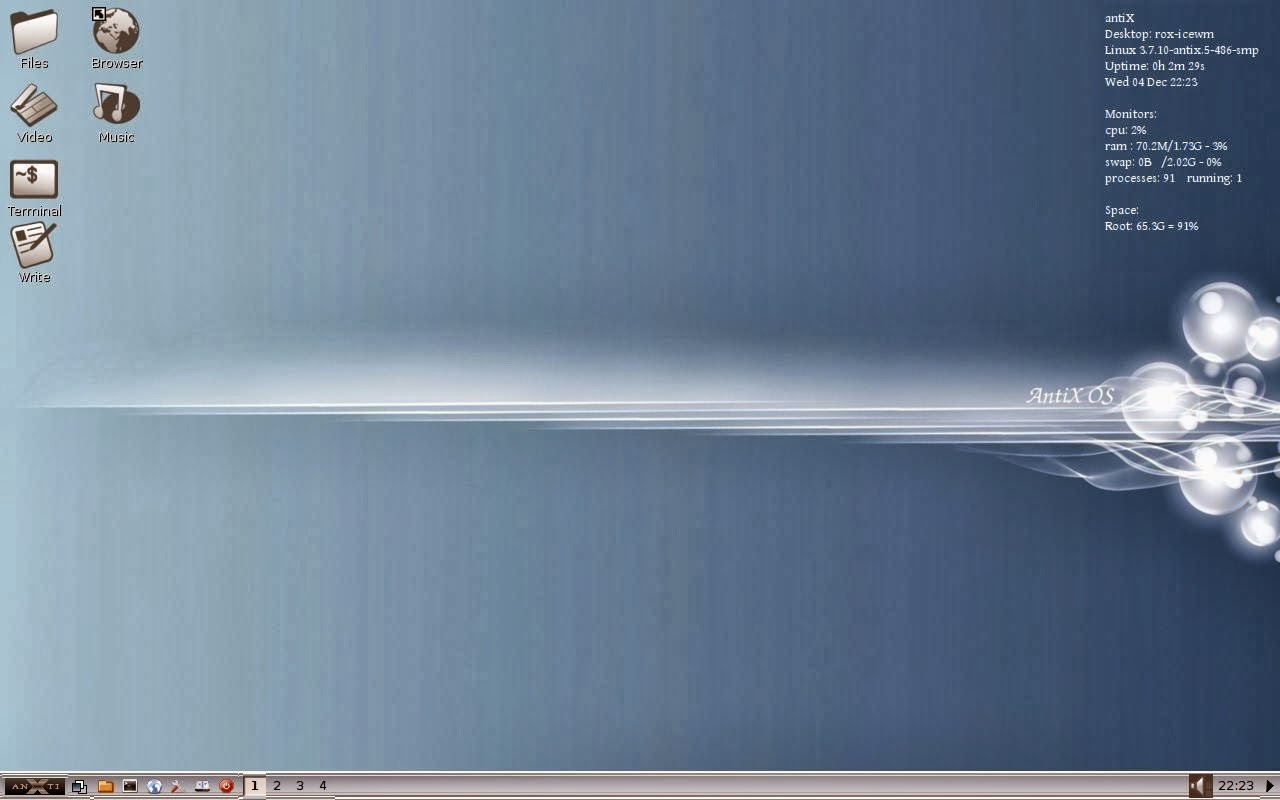
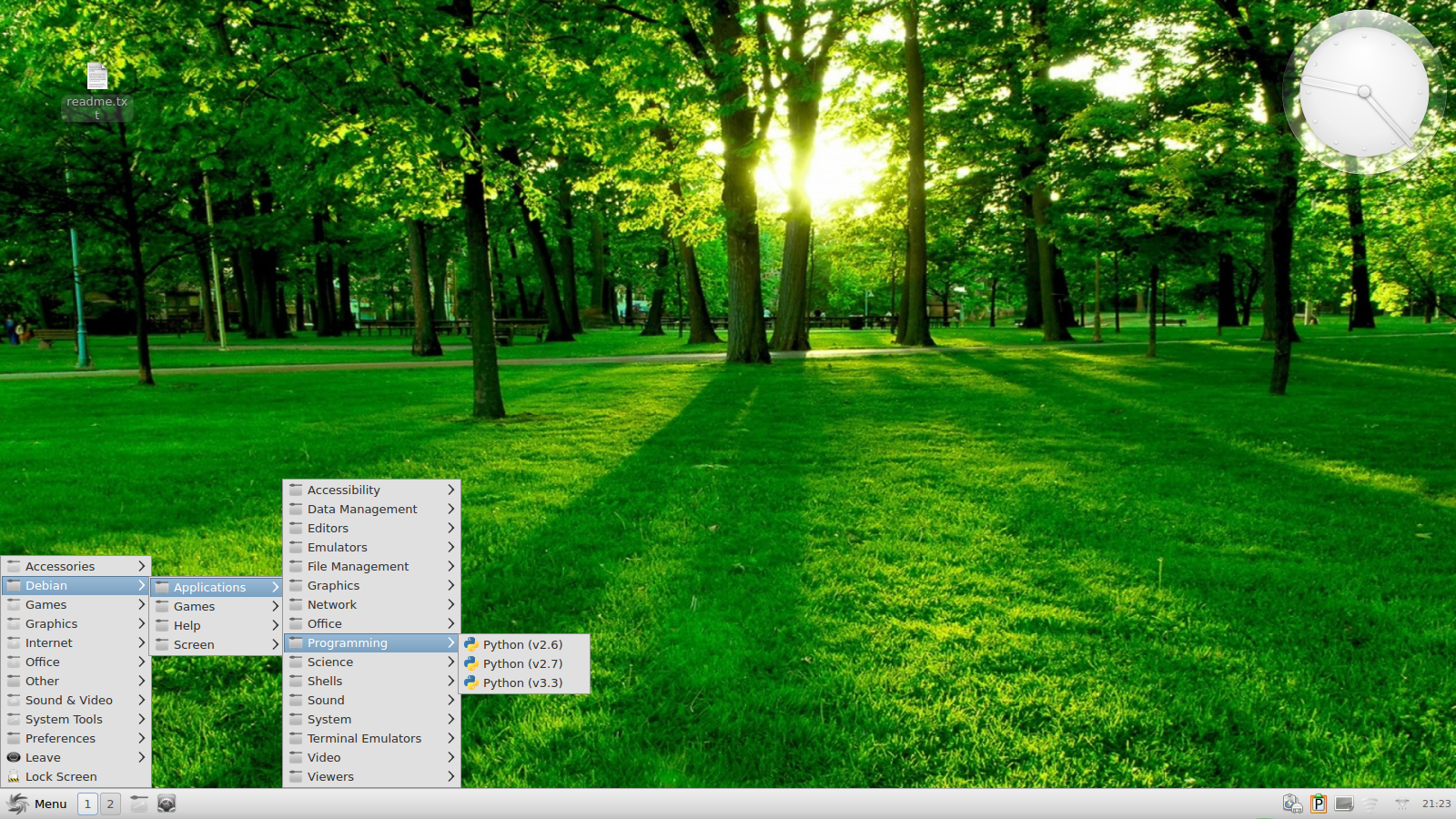
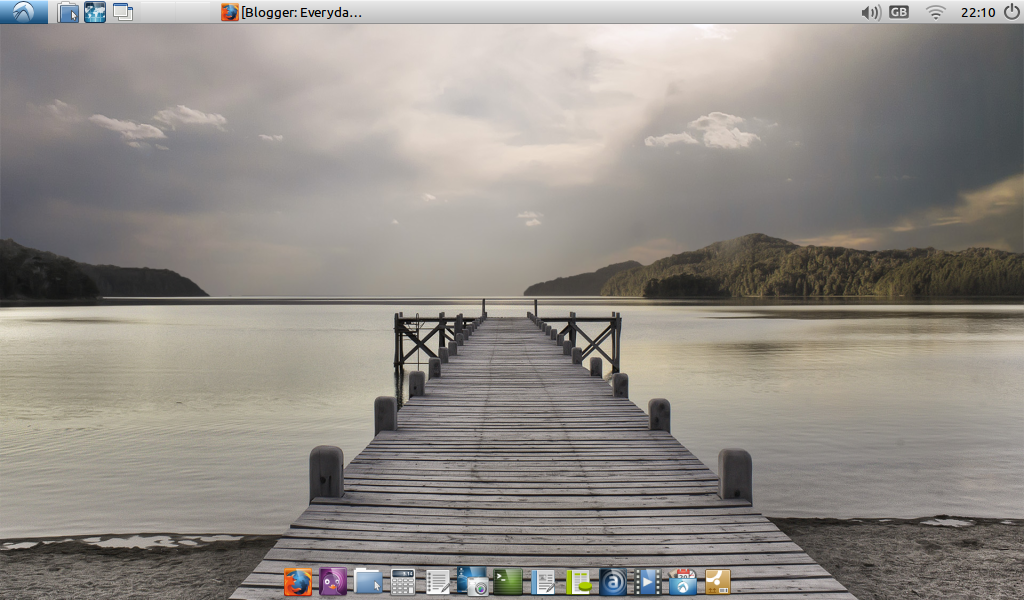
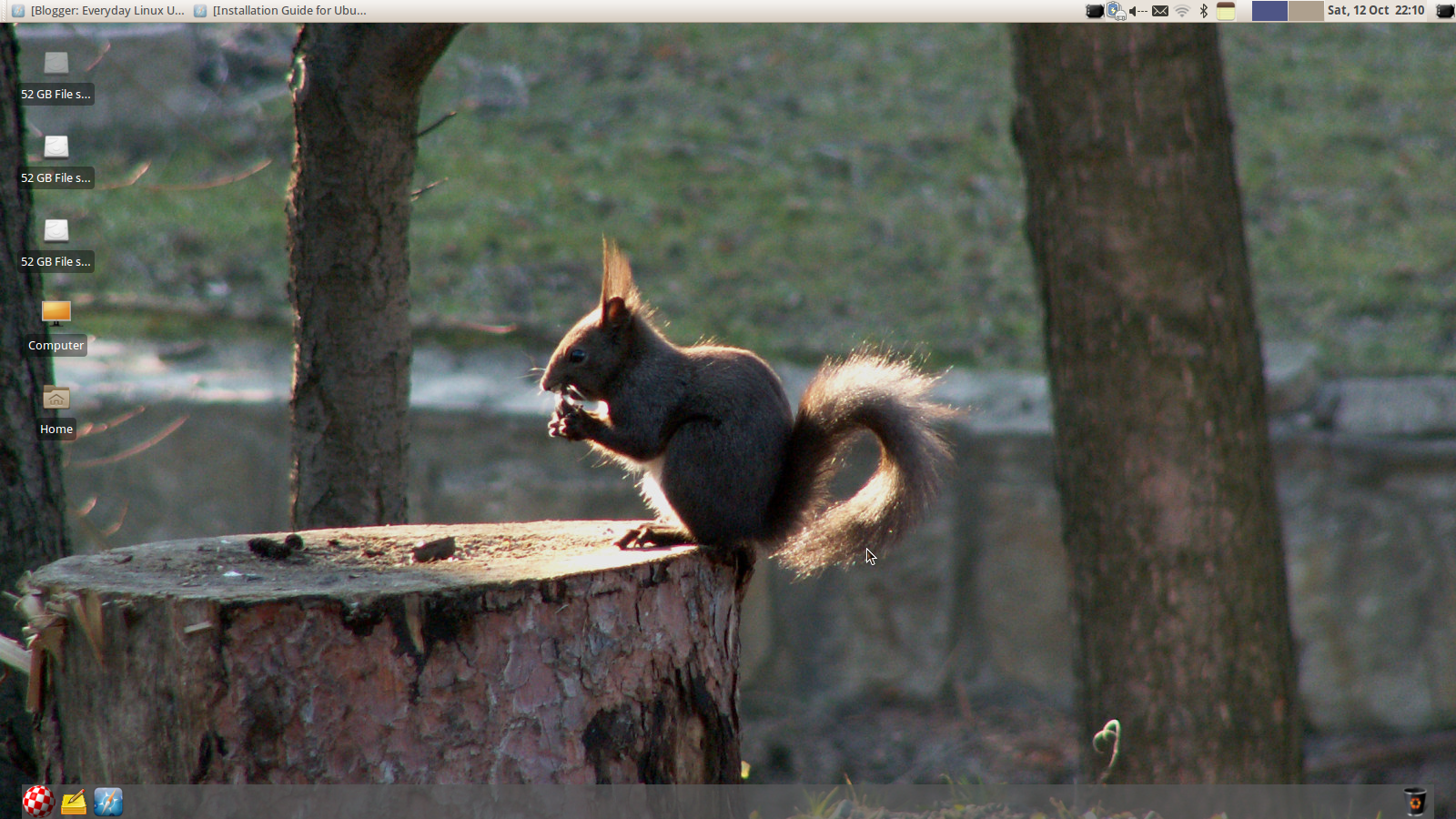
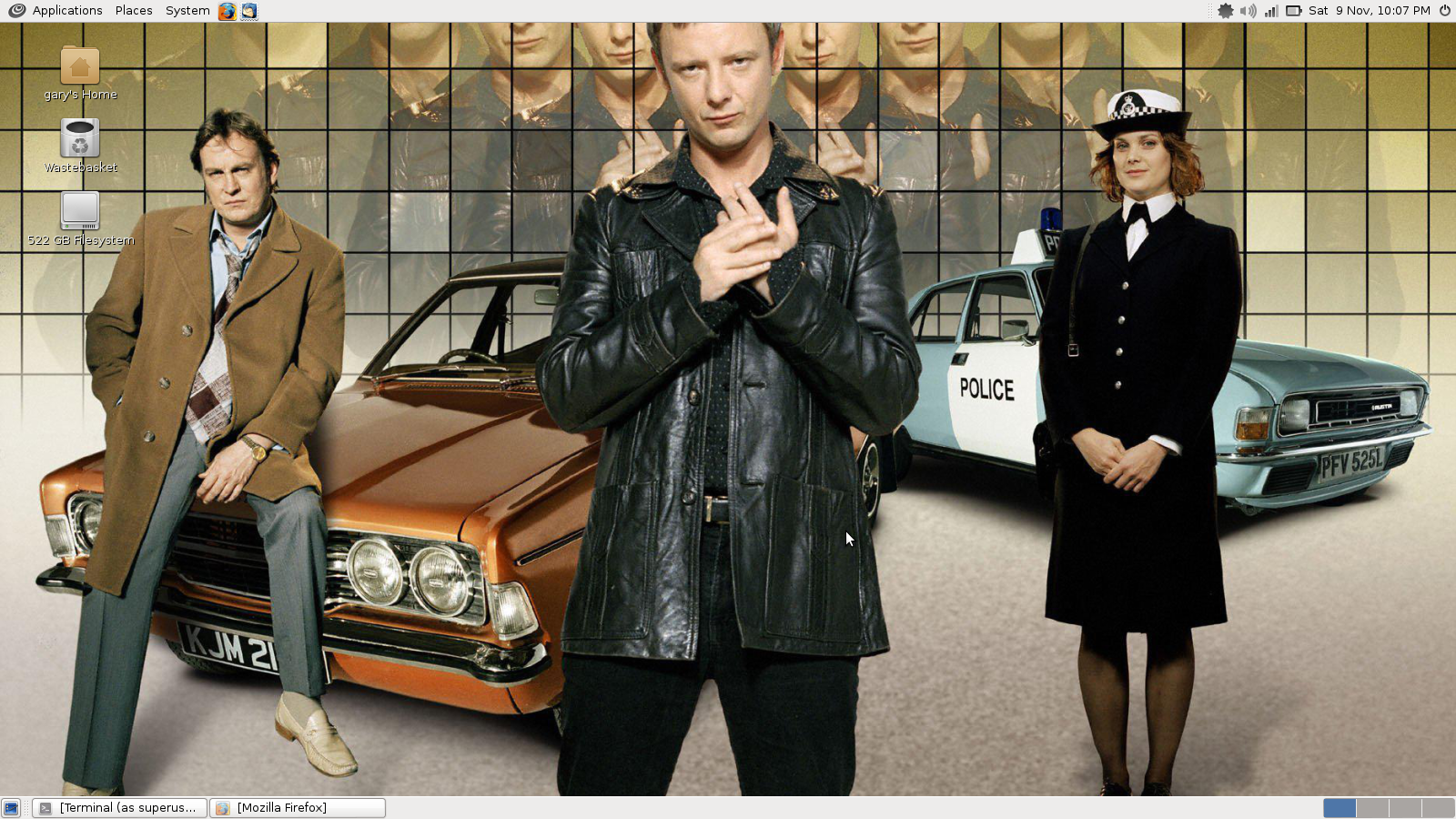
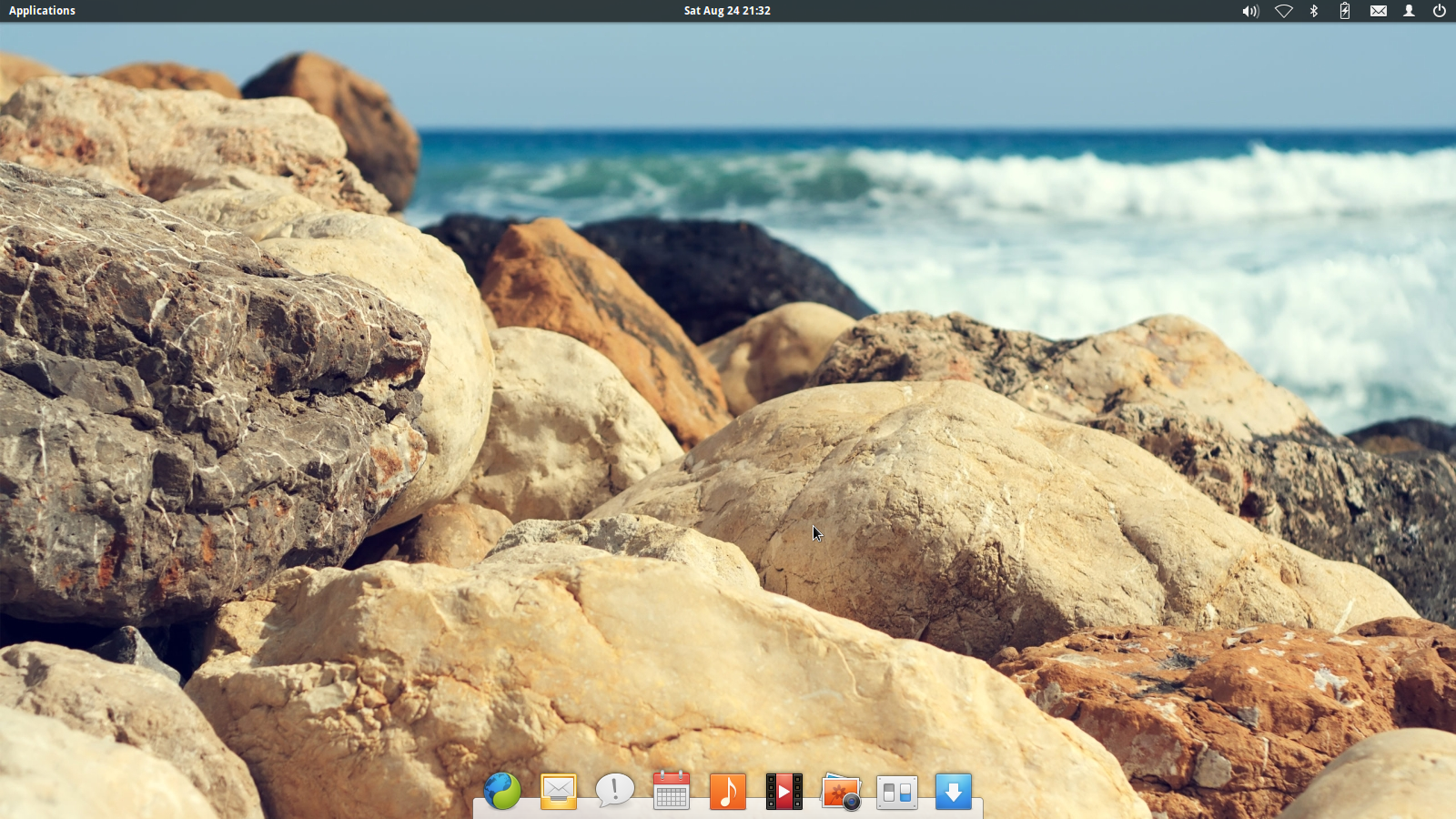


Thanks for the two excellent posts about linux for netbooks. I'm not sure which type of netbook you used for testing, but I still have an Eee PC 701 4G. It has run a few versions of Bodhi Linux quite successfully. But since two years I have Watt OS R6 installed, and it works like a charm. On my pc I run the most recent R7.5.
ReplyDeleteWatt OS isn't one that I have tried as yet. One for the future
DeleteI have installed WattOS R8 on an Aspire One AOA 110 and it works well.
DeleteI enjoying the articles about Netbooks. I've got a HP Mini 110-3518CL that is currently running Kubuntu 13.10. I've maxed out the RAM at 2GB, and even though I love running KDE, it's starting to bog down on the later distros. Looking forward to trying some of these out on the netbook.
ReplyDeleteI currently have Kubuntu installed on my main laptop. It is currently my favourite distro
DeleteHave you reviewed Netrunner? It's a fun Kubuntu-like OS.
DeleteMight want to checkout LXLE, based on Lubunu but more resource saving! See it at LXLE.net
ReplyDeleteThis isn't the first time someone has suggested this to me. I will have to take a look and maybe write a review in the next few weeks
DeleteI also use LXLE on an acer aspire one d260 netbook and it works very well. Has everything you want without slowing the machine down.
DeleteDebian Wheezy with Xfce... can't go wrong
ReplyDeleteIt is hard to go far wrong with Debian but I think for XFCE you have to look at Xubuntu
DeleteOr Manjaro XFCE - fast, stable, semi-rolling, everything set up for you... Try it!
DeleteSince 2008 - we have been installing Fedora - first with Gnome 2, now 3 - on some 50+ netbooks. On the field, in remote areas, across Central India
ReplyDeleteWorks great! But netbooks are disappearing now from the market!
The reason I write these articles is that whilst shops are stocking less netbooks there are thousands of people who still own these devices. If they can make them do more for them by running Linux then that is a good thing
DeleteThanks Gary. I bought an Acer Netbook for my daughter in 2009. I don't believe in changing computers just for the sake of it. Our Netbook has enough life in it to last few more years.
DeleteUbuntu got slower and slower on it (with newer versions I mean). After reading your post, I am thinking of trying Lubuntu.
Bala - It is true, Netbooks are disappearing. It is disappointing to see that happen. I feel that they satisfy certain market segment.
-Sri (from AP, India)
blankon linux ,, runs smoothly on asus netbook N550
ReplyDeleteNever heard of blankon Linux before. Just done a search and by the looks of it the base is Debian and it heralds from Indonesia. Linux, the truly global operating system
DeletePeppermint Linux is my favorite for netbooks as well as desktop PCs. Fast, easy to customize, very light and stable.
ReplyDeletePeppermint Linux is in my original list of 12 great operating systems for netbooks.
DeleteI like the simplicity of the same OS on the netbook (eeePC 1011PX) as the home computer so I use LinuxMint15 on all (32 or 64 as necessary). Mint12 was very slow but 15 is quite satisfactory, a big difference! I simply use a 64GB SD card for all my files and it doubles as the backup for the home machine, all computers use links in the Home folder to so keeping them synchronised is no great problem.
ReplyDeleteLinux Mint does that very well. I reviewed Mint 15 XFCE edition last year and I like the way that the XFCE, Mate and Cinnamon editions all have the same look and feel.
DeleteI still have an Asus EeePC 900HA with Debian 7 Wheezy and XFCE as DE. Runs fast, stable (yes, really stable).
ReplyDeleteUsing on it:
* Iceweasel (Firefox) from backports to have current stable version
* Vim with some addons to code
* Git to checkout my repos so I can work from different computers/laptops I have
So I'm using it when I'm going out to browse the web and make quick edits for my projects.
I've replaced it's battery and still goes to 3-4h on WiFi.
Everybody asks me why I don't replace it. I respond, why spend money when it does it's job in the same amount of time and I make the same profit.
You are the second person that has recommended Debian with XFCE. I think it is a good choice. I would recommend Xubuntu over Debian for the average home user.
DeleteAnd you dont even mention MeeGo?
ReplyDeleteIs MeeGo still an active project
DeleteMeeGo has been discontinued since September 2011.
DeleteI wonder why there are always people who suggest or mention distro's that are discontinued... It's just pointless, really...
http://circlesoftrust.blogspot.be/2013/10/from-belgium-with-love-elive.html
ReplyDeleteGood article. I still prefer Ubuntu Netbook Release 10.04, now obsolete, for my old eeePC 701 4G. This is a very tiny netbook, and most distros don't work well with it. Classic desktops don't work well on 800x480 at 7" screens. I found UNR 10.04 a fair compromise.
ReplyDeleteThe only issue with that is that it is very out of date. Why not try a MATE based distro such as Point Linux?
DeleteCan't go wrong with Bodhi Linux! I have it in my netbook and my laptop. Works like a charm on both! Ever since the day of installation, I quit distro hopping.
ReplyDeleteBodhi is in my original list of 12 great Linux based operating systems for netbooks
DeleteThis comment has been removed by the author.
ReplyDeleteIf the netbook is aimed at education, especially children's, the best bet is GalPon MiniNo GNU/Linux for children (PicarOS Diego). You can tell by the UI that it is actually designed for kids.
ReplyDeleteThanks for the suggestion. I hadn't heard of this one before
DeleteI would like to recommend MiniNo for Desktop older than 10 yr. it is based in Debian wheezy and runs pretty fast in netbooks like yours as mine Acers.
DeleteWhat, no Arch?
ReplyDeleteEveryday Linux User is aimed at the average user who uses their computer for web surfing, watching videos, listening to music etc. I think Arch is a good operating system but maybe not an easy distribution to install and learn.
DeleteThis comment has been removed by the author.
ReplyDeleteIn fact there were at least three generations of "netbooks" on the Intel Atom: first gen around 2007 were Windows XP and various proprietary Linux distros provided by the OEMs, that all failed. XP ran well and blew the rest out of the water. I bought an Acer with XP but the hardware broke.
ReplyDeleteThe second gen around 2009 was pre-installed almost exclusively with Win 7 Starter, a crippled version of W7 that could be fixed with third-party optimizing tweaks, but still overtaxed the hardware, requiring about 40% of RAM to run. I have one of those. I still dual boot lightening fast Lubuntu 10.10 on it running obsolete software since Linux keeps wanting to reinstall the fatter and fatter OS instead of learning from XP and maintaining the OS and repositories to support third party software updates. If I need current software I use Windows, if I want to browse safely on an old browser, I use Lubuntu. My second gen netbook will die before I change the OS on it.
Right now, the big question is what will replace XP on older machines once MS support is terminated in April. Once again, Linux is blown out of the water as it was for first gen netbooks, and it will not be a factor. Linux has decided to fail to be a consumer alternative Windows, in order to keep forcing more and more reinstalls.
I've decided on Mint 16 XFCE for an older non-netbook laptop with half-decent specs that had XP on it, to squeeze another year or so from it. All in all the most recent Linux distros are about the same as W7 and W8 in resource requirements. But unlike Windows, the OS has to be completely reinstalled every year or so to keep software repositories up to date, regardless of distro. Reinstalling Linux distros is a bloody nuisance that takes hours of reconfiguring the OS and third party software like LibreOffice or GIMP. This is a nuisance unknown to Windows users.
Smells a lot like TROLL. XP ran like a turd on netbooks, Win7 actually ran a bit better. Reinstalling a Linux distro is no nuisance, and can be completed in about 20-30 minutes on most. Can't even recount the agonizing hours of reinstalling Winblows after a blue-screen and trying to hunt down all those stupid license keys and CD's. Not to mention the nightmare of hunting down drivers. I was absolutely shocked the first time I installed Ubuntu on an old tossed aside Dell, and found that 20 minutes after popping in the disk I was up and running with a full host of free software included. I never looked back!
DeleteAnd hey, what about Puppy Linux on a Netbook! Talk about snappy!!!
What tosh! eeepc 701 4G dual boots Xandros, Mint10 from a card, and from USB for whatever is on the pendrive. Purchased Xmas 2007 and still in daily use. Gnu compilers and X working well. Only upgrade is memory to 1GB. Admittedly XP may have worked with an internal hard drive, but so slow! Surprise is that battery is still good!
DeleteLightest distro I've met so far : crunchbang.
ReplyDeletehttp://crunchbang.org/
None of those distros suit on a netbook. The GUI is just too small. Some kind of netbook-launcher or lxlauncher is a must, e.g. EasyPeasy or some old Ubuntu Netbook Edition, which is much faster than the recent Ubuntu. Still you can install recent Opera on that legacy distros.
ReplyDeleteAlphaOS ON THE FIRST NETBOOK - EeePC 2G SURF (700)
ReplyDeleteThis is an interesting distro (I use AlphaOS 10 though AlphaOS 12 is the last 32-bit version available) based on Puppy Linux and Arch Linux (ArchPup).
I have it installed using Unetbootin on a USB drive with a separate save file (either on same USB or on a different drive) which can be zipped and the archive restored in case one wants to go back to a previous state.
With Firefox browser pre-installed one can add using pacman Abiword, Gnumeric, View Your Mind for light-weight office apps that work on the 571 Mhz Intel Celeron processor. Besides 480 pixel videos on YouTube can be viewed effortlessly using SmPlayer and Smtube that use the installed Mplayer to watch movies. Also Flash is supported in the Firefox browser and one can watch videos though the netbook processor struggles to handle quality beyond 240p.
But the simplicity of Arch, the user-friendliness of Puppy with its savefile as well as the lightweight Openbox desktop environment makes this an outright winner on the world's first netbook - the Asus EeePC 2G Surf!
You can check it out at http://alphaos.tuxfamily.org/
I will have to look in to AlphaOS. Not heard of this distro before
DeleteantiX, at the head of the list here is very interesting, geeky, has this UNIX nostalgia about it as it has this old school Unix look at first glance. So that's cool.
ReplyDeleteBut it's first and foremost very functional, doing a lot of stuff with an incredibly low resource footprint.
Scripts and in-house applications make it possible to have things like a screenshot app etc and a good control panel while avoiding the use even of a desktop environement like Xfce. This makes the system usable even on VERY old hardware, like a 400 mhz 256 mb RAM pc, and fast on f.ex my old laptop, an 1.6 ghz 756 RAM pc.
An run with Debian stable sources this system is even extremely stable and reliable. And actually very easy to use - a bit of an achievement while even avoiding Xfce4 or the use of things like Networkmanager.
AntiX makes my old Samsung boot faster than my Toshiba Satellite Pro. It is like a Prius taking on a Porsche and winning
DeleteantiX has a 'base' version without Libreoffice, using Abiword and Ted (rtf only editor). 300+ mb iso.
ReplyDeleteThanks for the great review. It helped me a lot in the search for a new OS on my netbook.
ReplyDeleteI've tried almost every distro recommended for a netbook, some ran fast but weren't user friendly, while other where "pretty" but quite sluggish. The best i've found was Manjaro Netbook Edition, it works out of the box, doesn't wast screen space and has a kernel optimised for Atom Processors.
ReplyDeleteYou can find it here: http://forum.manjaro.org/index.php?topic=7319.0
Hello There,
ReplyDeleteI'm trying Elementary OS, for me is the best distro EVER, I have a Lenovo B590 and everything is faster. I've a core i3, 4GB DDR3 and 320GB on hard disk.
Hi,
ReplyDeleteI've recently changed to a netbook, aspire v5-121 amd c-70 8gb ram 120gb ssd, i used to have win7 on my notebooks but it seems to bee a bit much for this processor.. can somebody recommend a good distro, nice clean easy to use, mostly watching movies and youtube..
i really like Elementary from above.. can i run it smooth on this config? or is there anything that looks like Elementary?
thanks
Should be fine. I run Elementary on an old Dell D620 with 2gb Ram and it is snappy and ultra smooth. Nothing else is as tastefully polished, clean or simple out there in the linux distroworld as far as I am concerned, maybe stock Xubuntu but that is a subjective statement, your taste may vary. Not sure how a netbook would cope with it though, which is what the article is about, for that Puppy is still hanging in there, and I hope it is around for a while to come........Nice article by the way Gary. Have fun guys.
DeleteI think your netbook should be fine to run Elementary. It works well enough on my Aspire 1 and it isn't as powerful as your netbook
DeleteSalix is a stable, fast and elegant Slackware derivative, with xfce as its default desktop. It is much easier for relatively inexperienced users than Slackware though, and has a full package management system with dependency checking. Salix 14.1 xfce has just been released, with other DEs (KDE, Openbox, Maté ...) to follow. I use it myself on an Asus Eeee.
ReplyDeletewww.salixos.org
I haven't tried Salix yet. I will add it to my list.
DeleteRan Linux mint 16 xfce on a Lenovo net book s10 idea pad. Not as smooth as I'd would like, going to try elementary, looks fun
ReplyDeleteGary,
ReplyDeleteHaven't seen your blog before but I really appreciate this post. I am looking for an OS for a sweet little Toshiba NB 205 Netbook. I usually default to Lubuntu for this kind of thing but for some reason it would not boot after install although the live environment ran fine. I've tried Puppy and Antix, too, and both had their downsides. Bodhi, which is my all-time favorite distro, ran a tad sluggish on this machine (very surprising) so I'm downloading Point now to give it a go. Thanks!
I'm getting an Android Netbook with about 500MB of RAM, 4GB Hard Drive, and an ATI Mobility Radeon HD 4250 graphics card. Which OS would you recommend?
ReplyDeleteIs there anyway you can increase the RAM? You might get Lubuntu working but it wouldn't be the greatest experience.
DeleteI'm using Debian testing netinstall with openbox desktop and just installed the software I really need. Here in Spain is easy to find people throwing laptops away (because they don't know GNU/Linux) and you can upcycle a 2gb ram to increase performance for free. Also I'm using vnc, to open software on other computers I have that needs more resources such as virtualbox, compiling software,...Great article, thanks!
ReplyDeleteIf you are skilled enough to do that (and it only requires a bit of extra reading) then this is definitely a good way to go
DeleteI have an Asus T101 MT, so does anyone know if any of these (or other) distributions support and/or handle touch screens? I'm tired of running Windows 7 there, specially after I upgraded it to the Ultimate Edition (yes, dumb me).
ReplyDeleteAcer A5-123 - constant 100% CPU load by "jockey-backend" and "apt-cache".
ReplyDeleteElementary OS so cool, lol
ive tried all sorts of os over years but at the moment im using deepin on a compaq presario cq56 and looks and use are easy , on a toshiba portege p3500 with 1gig of ram i use bhodi but lxle runs nice as well on it , and on my old compaq cq 60 i use sparklylinux game version , and on a compaq cq61 that has had deepin , mint , ubuntu ect on it lol ... and finally on a small dell mini 10 i used androidx86 im forever trying new and old os
ReplyDeleteGood roundup thanks !
ReplyDeleteMy aspire one D552 luckily is the ADM cpu 4GB ram higher res screen.
Do you get the 32 or 64 bit versions of the OS's ?
I like the tool bar on the left edge, any of those choices better at that ?
cheers
Pete
Which distro you will suggest for a laptop running Core 2 Duo @ 2ghz, 4GB Ram 64 bit? It would be used for surfing, media
ReplyDeleteThat kind of laptop will run most Linux distributions and most desktop environments without any issues. You really have a free pick and it is down to personal preference. Ubuntu, Mint, PCLinuxOS, Elementary, Zorin etc. They would all work fine. It is just a case of trying a few out and see which you like the best. Or you can go for Ubuntu and just install different desktop environments until you find one you like.
DeleteI've just installed Peppermint 5 on my 2010 netbook. As I need Dropbox and usually work with LibreOffice and Firefox simultaneously, and it has only 1 Gb of RAM, I wanted a very light desktop.
ReplyDeleteI tried some live distros. The netbook is able to run 64 bit ones, but they use significantly more RAM. I tried Crunchbang, and it's really fast, but setting up Dropbox looks complicated. Oh yes, it's explained in the forums, but I leave it for advanced users who like to tinker with their systems. LXDE is lighter than XFCE and MATE. So the choice was between Peppermint, Lubuntu and LXLE
I didn't try LXLE 32 bit, but I think is still based on Ubuntu 12.04 (which, by the way, was working perfectly on my netbook a year ago). I will use Peppermint 32 bit for the moment, I like the concept of its webapps. Dropbox installed without a problem (but I want to try replacing PCmanFM with Nautilus, in order to have the Dropbox menu entry). If it deceives me, I will replace it with Lubuntu. Going with the big names is always a good idea.
Hi Gary,
ReplyDeleteGreat articles. I have an Aspire One 1.6Ghz Atom processor and have tried Linux Lite, Zorin and Mint as well as a couple of others like Easy Peasy. They all run reasonably well except for a couple of issues that are causing a headache for me. The main one is the keyboard layout which I am having a lot of problems with. I have the unit with the Euro on 5 but the 5, 7 and 9 keys don't operate nor do some of the Fn keys. Is there a fix for this or a specific distribution I should be using? as i have not seen much info regarding getting this specific model to work with Linux. Kind regards. Mark.
Hi Mark,
DeleteThis isn't a problem that I noticed whilst trying these distributions.
I have Xubuntu on my Acer Aspire One at the moment. Let me give it a go on that and I will take note as to where my Euro key is to see if it is in the same position as yours.
I will get back to you shortly.
Hi Gary!
ReplyDeleteI must say that your article was perfectly made especially for beginner like me, because i know nothing but surfing the net because where i live i don't have people like you to help us -_- [ i'm not a native speaker of English ]
I have bought a humble notebook due to its price ( others are expensive in here) whic is Accent W25BBL with 2Gb of ram/Amd C-70 1Ghz and lower card graphic inside !! I tried windows 7 which was very slow especially video performance and XP worked well but it got stuck when using flash content so i had to restart each time -_-.
My request is which one of these OS is light and will work fine with my notebook's configuration so i can feel relieved after so many days of not surfing the net at ease !! Videos i can watch don't get beyond 480p quality i wonder if when i use one of these OS i will be able to watch 720p content???
Elementary would be my first pick and if that doesn't work Lubuntu
DeleteSo which one would you recommend?
ReplyDeleteElementary would be my first choice
DeleteI have attempted to revive my good-old Asus 1005ha netbook,unfortunately the MX-15/Antix would not start by using Unetbootin so did Point Linux. LMDE2 was a positive attempt, however my best choice was the Ubuntu Mate 16.04 LTS. It is quite sluggish, Firefox is rather slow, takes some time to switch off, gaving said that, everything else worked fine. Keeping in mind that my netbook was sold 8 years ago, it works admirably.
Deletewonderful list. I have tried most distros on my Asus 1005ha (with 2gb ram) including the now discontinued Crunchbang, xubuntu(one of my fav), ubuntu mate (which is a tad too bit heavy for netbooks), manjaro xfce (excellent), korora 21 xfce(beautiful), opensuse 13.2 kde (with desktop compositing turned off it lightening fast but a tad buggy), salix, semplice, and salentos (my now favorite distro) and I would say that Salentos is a distro that deserves to be checked out. The desktop envirobment is a beautifully themed openbox. The battery on my 9 cell 7200mah battery is nearly 8 hours (over 5+ with heavy browsing and music and email and such). Of course I added acpid, pm-utils, and laptop mode tools. Ubuntu 14.04 is the base which is a fantastic OS. Everything works flawlessly. It's stable. the apps work, the power management is nice, and everything is lightening quick. It's a breath of fresh air. For anyone looking for a stable, fast, light on resources, that is reliable and works, is beautifully themes, AND is packed with fantastic software then Salentos is definitely worth checking out. It's my go-go driver; my workhorse OS.
ReplyDeleteI would like very much to resuscitate a Toshiba nb305-n410 with 1 GB RAM. A nice machine with the most glaring problem being the inability to smoothly play video of any type. I am new to both LINUX and to the idea of switching the operating system. Your excellent articles and reviews are appreciated and just what I needed to get started. At this point I find that there are many choices and I understand I'll need to research and try a few to find what I like and what works best. What I would like is if you could help me narrow the choices a bit and perhaps increase the chance of improved video. In light of the cited video playback issues can you advise if any of these distributions might have a better chance at smooth video performance or is that a problem bound to the hardware ? CPU is Atom N450 @ 1.66 GHz . I am open to upgrading memory from 1 to the 2 GB max if that will help. With windows 7 both the CPU and memory are frequently maxed out for what (I think) is minimum application activity so I was hoping LINUX could keep this machine alive and out of the dump. Thanks.
ReplyDeleteI've installed Lubuntu now, seems to be very good.
ReplyDeleteI've currently resurrected my aging eee pc 701sd with a view to using it as a travel laptop to decant video files from a go pro into a 1Tb caddy when back at the hotel. 2Gb memory with a 32gb ssd flash har&rive card, Mint (vs 'Sarah') currently runs very well,considering the 900MHz cpu. Stable, reliable, everything appears to work, even picked up a £4 Cambridge Bluetooth adapter without needing additional drivers and straight away I could stream audio to a soundbar. Picked up my Hp printer/scanner device off the network for fun - it just works. Mint appears to run at around 267Mb baseline memory so plenty of overhead for apps so long as your prepared to wait for them to load. It is very possible to stream audio and simultaneously record it from stereo mix in Audacity without stuttering, though the poor little thing struggles now with YouTube in a modern browser. Chrome does work very well, but that's until you synchronize all your apps and it simply bogs down under the load. Either use Chrome and don't sign in or just use Firefox already within Mint. 3d graphics were never the little eye's strong point so I haven't bothered with any games, however there are some really good remote desktop programs in the repositories that scale a larger desktop to the tiny screen and so it's great for keeping an eye on my Hp Microserver. TL:DR, upgrade to 2gb memory, update the HDD with fast flash and throw Mint on it - usable machine again. James.
ReplyDeleteLubuntu 32 bit runs well on my Acer aspire One, which I have upgraded to 2 Gig ram. Elementary ran a bit slow for some reason, but looks great.
ReplyDeleteLubuntu 32 bit on Acer Aspire One, 2G ram. Intel atom. Runs very nice.
ReplyDeleteI am pretty new on Linux, always a Windows user, and previously a dedicated DOS user/assembly writer. Having this LeNovo S10 NetBook unit with XP that is super heavy and delay several minutes to just boot and give me a slow dragging Chrome browser screen, it is painful. Yesterday I installed my first Mint Sarah on a VirtualBox of a Win8-64, and thought it is fast and could use it on the NetBook, that it would be used only as a NetBook really, check Facebook and navigate lightly on the internet. What do you experts recommend for it? The Mind Sarah is light enough? or there is another lighter version? Will be using Firefox or can I still using Chrome ? Atom 1.6GHz, 1GB RAM, 160GB HDD.
ReplyDeleteFor ASUS eee's with only 2 or 4 GB total memory (ssd) the only distro worth bothering with is Leeenux. It does cost $9 for access to about 15 versions, several of which are written specifically for both the 2 and 4 GB versions. Their more fleshed out versions (currently using LXDE, 32BIT, and XFCE, 64-BIT) also work well on n550/570 based netbooks, though my hands down favorite is MX15 (soon to be 16). With SparkyLinux minimalgui, Kali Light, surprisingly Korora 23 Mate, Sallix openbox and a new kid on the block OBRevenge being fairly close seconds.
ReplyDelete